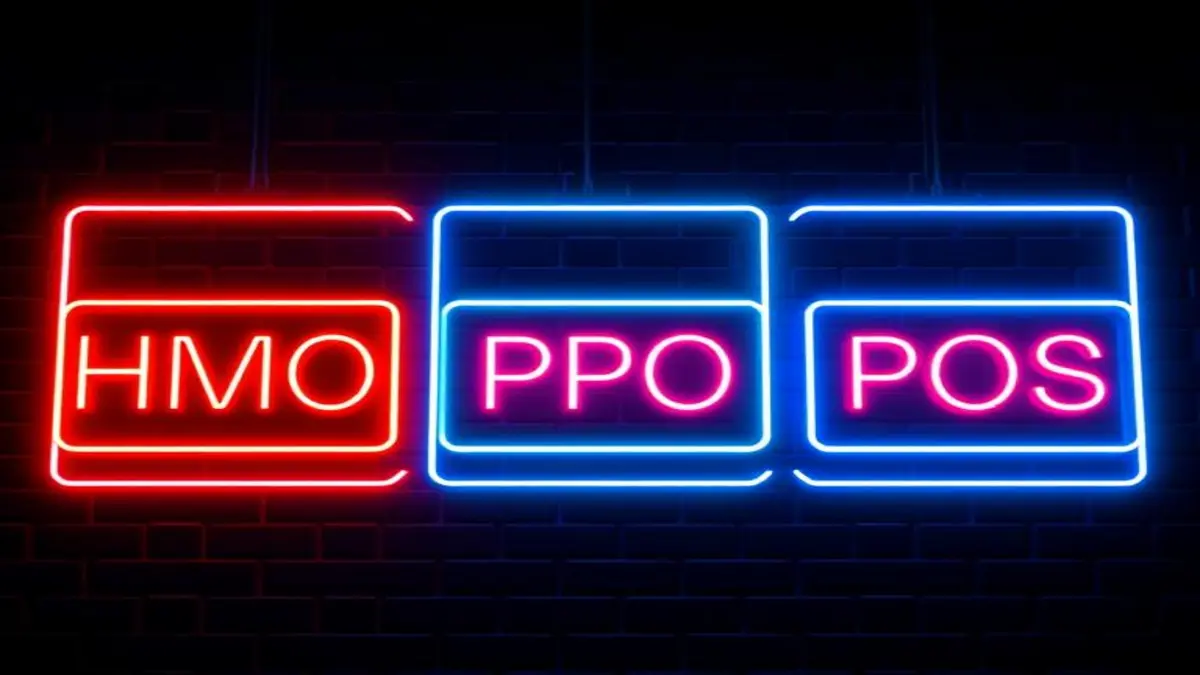In health insurance, individuals can choose from different plans based on their needs. Three common types are HMO, PPO, and POS. These plans offer healthcare coverage. However, they vary in structure, flexibility, cost, and access to services. Here’s a breakdown of each:
1. Health Maintenance Organization (HMO)
An HMO, or Health Maintenance Organization, is a type of health insurance plan. Members must pick a primary care physician (PCP). You need referrals from your PCP to see specialists.
Main Features of an HMO
The main features of an HMO include:
- Network Restrictions: HMO plans usually cover care from in-network providers only. This rule applies unless there’s an emergency. You must see a doctor or specialist who is part of the plan’s network.
- Primary Care Physician (PCP): You must choose a PCP who coordinates your healthcare. If you need to see a specialist, you usually need a referral from your PCP.
- Cost: HMO plans tend to have lower premiums and out-of-pocket costs compared to PPO and POS plans. However, they offer less flexibility in choosing healthcare providers.
- Out-of-Network Care: Except in emergencies, HMO plans generally do not cover care outside their network.
Pros of HMO
HMO plans have several advantages:
- Lower cost (premiums and out-of-pocket expenses).
- Coordinated care through your PCP.
Cons of HMO
However, there are some downsides:
- Less freedom to see specialists or out-of-network providers.
- Requires referrals to see specialists.
2. Preferred Provider Organization (PPO)
A PPO is a flexible type of health insurance plan. It allows you to see any doctor or specialist without needing a referral. Here are the key features of a PPO:
Key Features of PPO
- Flexibility: You can visit any healthcare provider. This includes both in-network and out-of-network options. You don’t need a referral. However, seeing an out-of-network provider may result in higher costs.
- Network: PPO plans have a network of preferred providers who offer lower rates for services. To minimize out-of-pocket expenses, it’s best to use in-network providers.
- Cost: PPO plans usually have higher premiums and out-of-pocket costs compared to HMO plans. The flexibility to choose providers without referrals comes at a cost.
- No Referral Needed: You do not need a referral from a PCP to see a specialist.
Pros of PPO
- Greater flexibility in choosing healthcare providers.
- No need for referrals to see specialists.
Cons of PPO
- Higher costs in terms of premiums and out-of-pocket expenses.
- Less coordinated care, which may lead to confusion or fragmented care.
3. Point of Service (POS)
A POS plan is a hybrid between an HMO and a PPO. It combines features of both types of plans and has unique characteristics. Here’s how it works:
Key Features of POS Plans
- Primary Care Physician (PCP):
- Like an HMO, POS plans usually require members to choose a PCP to manage their care.
- You can see out-of-network providers, but you will pay a higher cost.
- Referrals:
- You generally need a referral from your PCP to see a specialist.
- If you go out-of-network, you can still see a specialist, but expect higher out-of-pocket costs.
- Network:
- POS plans have both in-network and out-of-network components.
- If you stay within the network, the cost-sharing is similar to an HMO.
- Going outside the network means the cost-sharing is closer to that of a PPO.
- Cost:
- The cost of a POS plan is between that of an HMO and PPO.
- This plan offers more flexibility than an HMO but at a lower cost than a PPO.
Pros of POS Plans
- More flexibility than an HMO because you can go out-of-network.
- Lower premiums compared to a PPO.
- Coordinated care with a PCP managing your healthcare.
Cons of POS Plans
- Requires referrals to see specialists.
- Higher out-of-pocket costs for out-of-network care.
Summary of Differences
| Feature | HMO | PPO | POS |
| Primary Care Physician | Yes, you must choose one | Not required | Yes, you must choose one |
| Referrals for Specialists | Yes, required | No, you can directly see specialists | Yes, required for in-network services |
| Out-of-Network Care | Not covered except in emergencies | Covered, but at higher cost | Covered, but at higher cost |
| Network Restrictions | Must use in-network providers | Can use in- or out-of-network | In-network for lower cost, out-of-network for higher cost |
| Premiums | Lower | Higher | Moderate |
| Cost for Out-of-Network Care | Not covered | Higher cost | Higher cost |
| Flexibility | Low | High | Moderate |
Conclusion
Choosing between an HMO, PPO, or POS plan depends on your preferences for flexibility, cost, and how much involvement you want your primary care physician to have in managing your healthcare.
- HMO plans are best for those looking for lower costs and are okay with restricted network access and needing referrals.
- PPO plans are ideal for those who prioritize flexibility and don’t mind paying higher premiums for the freedom to see any provider.
POS plans strike a balance between cost and flexibility, offering an option for people who want some level of managed care but with the ability to access out-of-network care.

